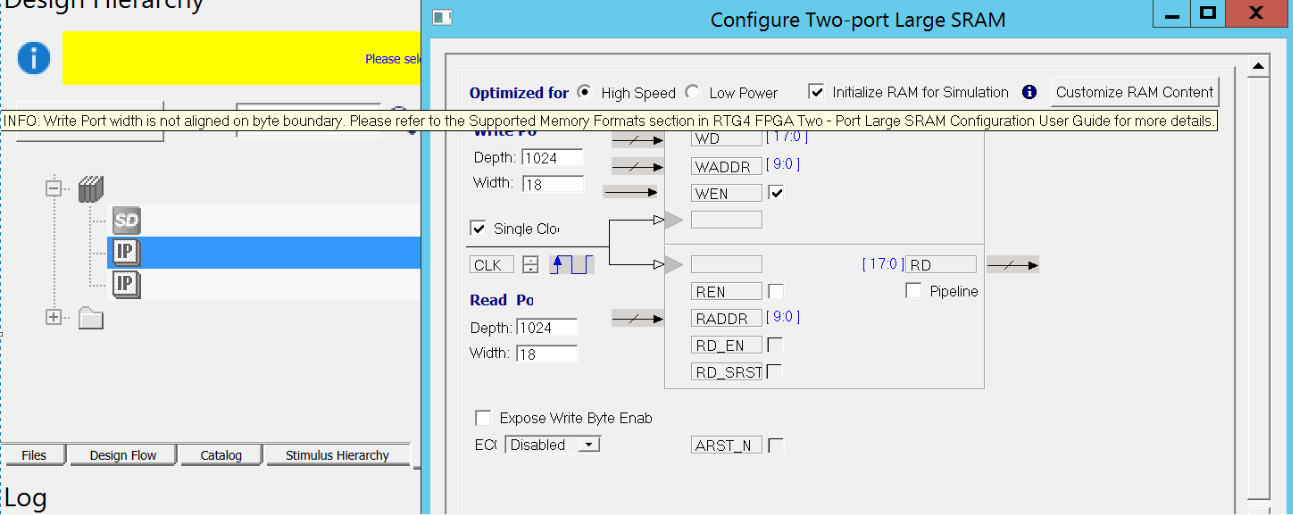Consider the following Intel HEX memory file.
Figure 1. Memory File Data - Intel HEX
Memory File

The binary stream of bits for above memory file data is:

If the memory port width is 4 bits, the tool reads 8 bits at a time from the binary
stream above. For the 8 bits, you must pad zeros for the upper 4 bits and specify the
actual data in the lower 4 bits, as shown in the following figure.

Figure 2. Padding Zeros for the Upper 4 Bits and Specifying Data in the Lower 4
Bits

The following figure shows the equivalent memory file data padded with zeros to achieve a 4-bit write port width.
Figure 3. Equivalent Memory File Data Padded with Zeros (4-bit Write Port Width)

When the tool parses the above memory file data (padded with zeros), it converts the data to binary and reads it as a stream of bits. If the port width is 4 bits, the tool reads 8 bits (byte-aligned), ignores the upper 4 bits of actual data, and stores the lower 4 bits of actual data in RAM, as shown in the following table.
| Address | Data |
|---|---|
| 0 | 0xF |
| 1 | 0xF |
| 2 | 0x1 |
| 3 | 0x1 |
| 4 | 0xE |
| 5 | 0xE |
| 6 | 0x2 |
| 7 | 0x2 |
| 8 | 0xD |
| 9 | 0xD |
| A | 0x3 |
| B | 0x3 |
| C | 0xC |
| D | 0xC |
| E | 0x4 |
| F | 0x4 |
| 10 | 0xB |
| 11 | 0xB |
| 12 | 0x5 |
| 13 | 0x5 |
| 14 | 0x0 |
| 15 | 0x0 |
| 16 | 0x2 |
| 17 | 0x1 |
Note: x1 and x2 port widths are handled
using the same technique of padding zeros. You always zero pad to the next
8-bit-width increment (8, 16, 24, and so on). If a write port width is not aligned
on a byte boundary, the following message appears.

Figure 4. Message when a Write Port
Width is Not Aligned on a Byte Boundary
